Motorcycle Investor mag
Intercontinental
Future collectible – Royal Enfield Continental GT535
by Guy 'Guido' Allen, circa Feb 2020
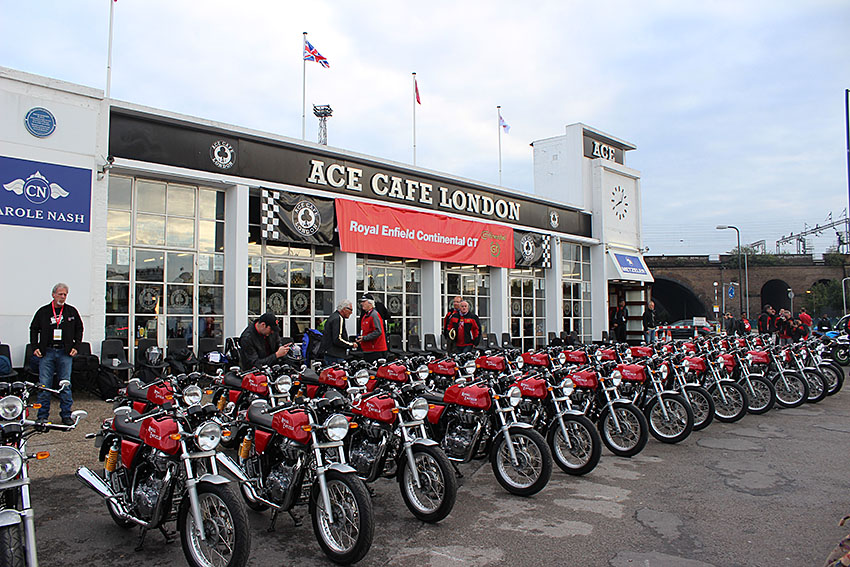
Beyond sweet styling and handling, Royal Enfield’s modern café racer was a global image-maker
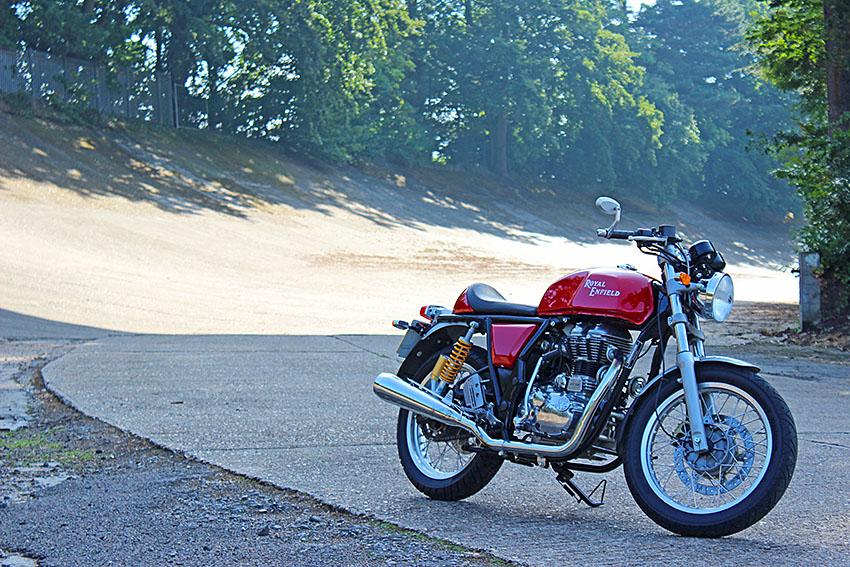
Sometimes, a new motorcycle model represents a whole lot more than a fresh coat of paint and new componentry. And this was very much the case for the 2013 launch of Royal Enfield’s Continental GT 535.
While an updated single from this maker wasn’t necessarily
earth-shattering – it had after all been building them for
decades – this bike represented a true coals to Newcastle
story. Here was an Indian maker that bought the rights to
a sturdy English design during the 1950s and was now using
London as the base for its international launch of a very
English café racer.
MODERN HISTORY
Righto, let’s roll back for a quick bit of history. Royal
Enfield had, since the start of the 20th century, been a
moderately successful motorcycle manufacturer. It’s prime
glamour model over the years was the 650, 700cc and then
740cc Interceptor twin, a rival for similar products from
Triumph and BSA.
However, its bread and butter range included the 350 and
500 Bullet singles, which had been in the showrooms in
various forms since 1931. In the mid-1950s, the series was
being assembled in India, to supply the local military.
Things went badly for the British firm in the 1960s and it
was out of business by 1970. Meanwhile, Enfield India kept
plugging away with its Bullets. In fact, you were able to
buy them here and in other western markets, branded as
Enfields without the ‘Royal’ appellation.
Without question, the biggest shift occurred when Enfield
came under the control of the giant Eicher concern and
became the pet project of a scion of the family that now
owned the firm, Siddhartha Lal. An economist with
post-graduate qualifications as an engineer, he made it a
mission to first win back the Royal Enfield branding
through the courts.
In relatively short order, the company underwent a
restructure, shut down an outdated manufacturing plant and
established two new ones and gave the venerable Bullet
series a heart transplant. The latter involved an alloy
engine designed for fuel injection, which was up and
running by 2007.
In 500 form that engine unit was still no powerhouse –
we’re talking around 25 horses (18kW) – but it was
quieter, easier to start and more robust than its
predecessor.
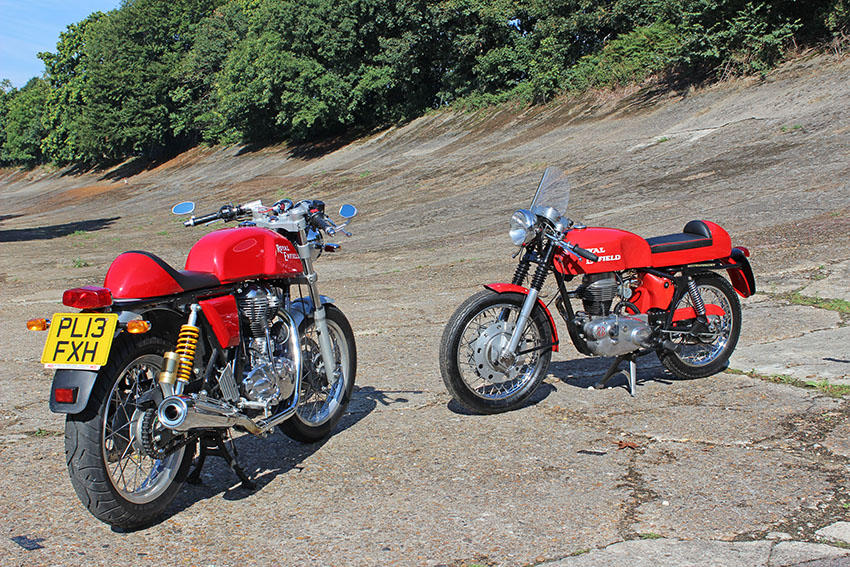
Roll on to 2013 and the company announces an international launch aimed very much at export markets, based from a motel in London. It’s for the Continental GT535 café racer, a revival of the look and nameplate of one of the firm’s 1960s successes, the Continental GT250.
Just to whet everyone’s appetite, it cheerfully announces
the machine has been developed in very close consultation
with that most British of hot-up firms, Harris Performance
Products. Oh, and the overall lines were done with
UK-based Xenophya Design. Really, any more British and
you’d expect it to come with a lifetime supply of fish and
chips!
As for the launch, it was an extraordinary exercise. It
included a seminar on British café racer culture, with
tours of the Ace Café, Soho, Lewis Leathers and
Brooklands. There was even a run to Brighton, though the
suggestion we re-enact the mods versus rockers brawls of
1964 met with disapproval.
As for the bike, it was a sweetheart. The styling was
spot-on.

THE MEAT & VEG
Spec was reasonably basic. The alloy engine had been given
a modest capacity boost to 535cc, and remained a two-valve
air-cooled unit with electronic injection. It claimed a
little more horsepower than the Bullet at 22kW (29hp) and
was matched to a five-speed transmission.
The chassis was based around a very conventional twin-loop
steel frame, with non-adjustable fork and twin Paoli
shocks with ride height adjustment. That lot rode on
wire-spoked Excel rims, with single disc brakes at both
ends. Of course, Brembo supplied the hardware for the
stoppers.
All up it claimed 184kg rolling weight, with all fluids
except fuel.

There’s no question Royal Enfield hit the proverbial nail
on the head with the styling. To that point it was easily
the best-looking interpretation of a café racer launched
by any maker in recent history. It presented well –
quality of finish was clearly a priority – and it felt
good in the saddle.
Despite the clip-on handlebars and the long-looking fuel
tank, the ride position was quite benign, and surprisingly
comfortable. There was unquestionably some vibration from
the engine, though that tended not to be intrusive until
you were hammering the thing. By 130km/h it was becoming
intrusive.
Suspension was short travel – okay for most situations –
while it steered very nicely. Medium pace turn-in with
very neutral manners and precise feel. Lovely.
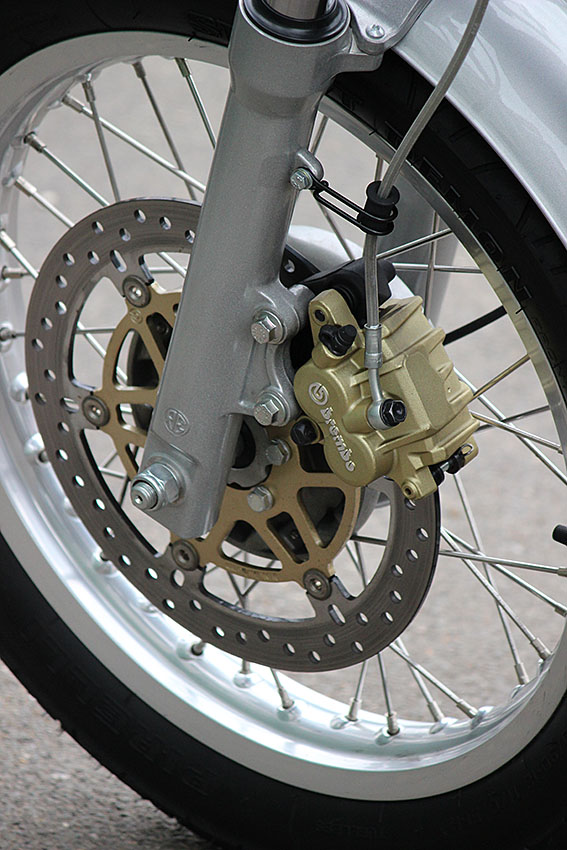
Braking was strong, with decent feel, though the front
lever liked a bit of effort to really wake up.
The main question mark was over the performance. Just
under 30 horses at a lazy 5100rpm seemed a bit light-on,
when you could easily imagine a maker pulling more like 40
without too much trouble. At the launch, it was argued the
bikes were intended to be a ‘blank canvas’ to which owners
could apply their own touches, including hot-up bits.
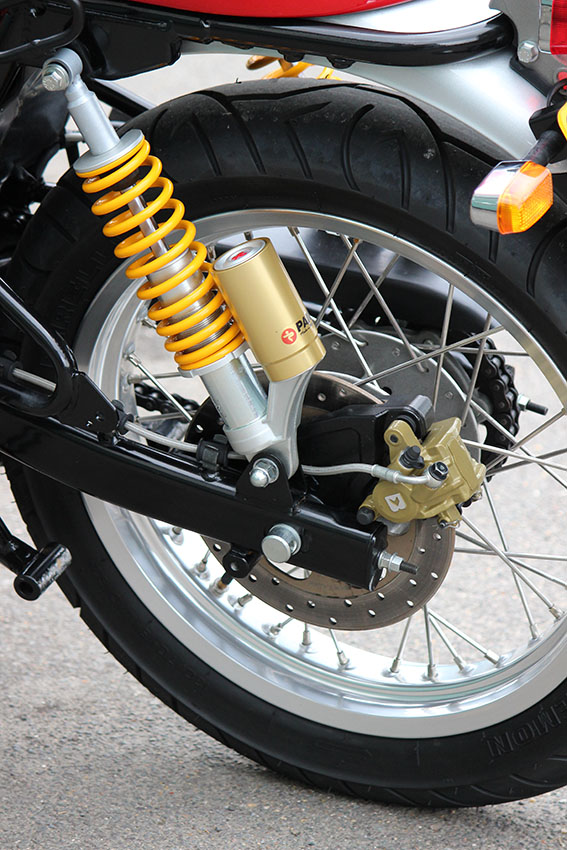
Maybe. It might also have been influenced by the need to
get an air-cooled single past so many variations of design
rules across the globe. Plus, the conservative tuning
helped to guarantee good reliability.
In any case, the performance was adequate. It would cruise
at 120km/h and top speed was nearer 145km/h. Where this
thing really shone was a swing through a set of curves,
maybe somewhere up in the hills, where you could take
advantage of the decent spread of torque and the
delightful handling. It had few peers as a low-stress
Sunday head-clearer.

THE PROPOSITION
Not long after the firm announced it was to release a new
series of twins – at the 2017 Milan show – Royal Enfield
revealed the Conti 535 was to be dropped. Production
ceased in early 2018, with the remaining stocks selling
over that year.
While it had served its purpose as an image-maker for the
company, the 535 didn’t seem to sell in the numbers the
company might have hoped for. In Australia, they cost a
shade under $10,000 on the road, which was reasonable.
However, that price range became increasingly crowded,
with a number of Japanese 650 twins nudging into that
space.
There are a few on the used market, priced from around
$5500 with low miles (under 10,000km). At the time of
writing, there was even a new one, with ABS, on the market
in Tassie for $9650 on the road.
Long-term, they have huge significance in the history of
the Royal Enfield brand, though it could be a very long
time before the market values reflect that. In the
meantime, you’d have something that is an absolute ball to
ride and is very easy on the eye. That’s not a bad result…
***

Enfield Indians
Here’s a bit of trivia for you: Late-model Royal Enfield
Interceptor twins were sold in America as Indians
(pictured). The deal was done by the Brockhouse
Corporation in the US from the mid 1950s.
Then came along another generation of Enfield-powered
Indians, assembled for the often-colourful Floyd Clymer.
The English engine was hosted by an Italjet-designed
chassis. Just 15 of the final model were built, just
before Clymer’s death in 1970.
Good
Stylish
Great handling
Low-stress
Bad
Light-on for power
Vibration
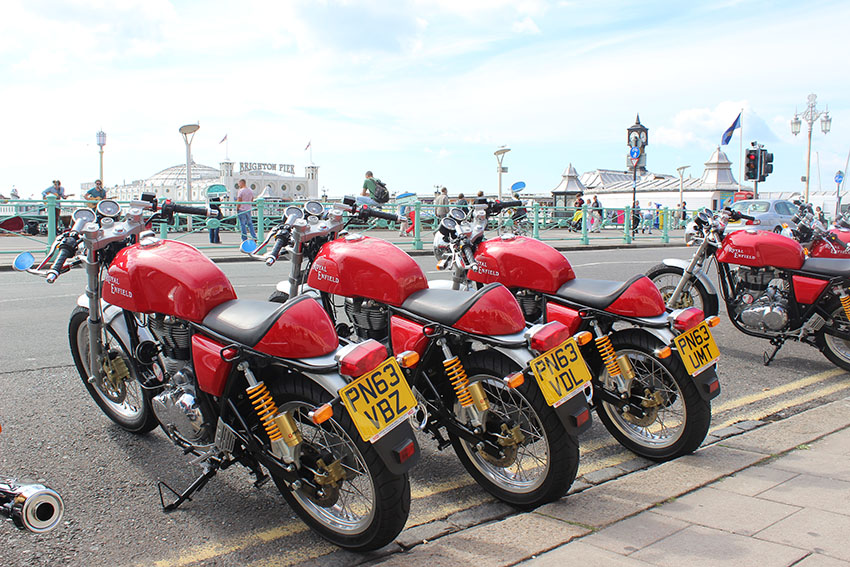
SPECS
Royal Enfield Continental GT 535
ENGINE
TYPE: Air-cooled two valves per cylinder single
CAPACITY: 535cc
BORE & STROKE: 87 x 90mm
COMPRESSION RATIO: 8.5:1
FUEL SYSTEM: EFI
PERFORMANCE
POWER: 22kW at 5100rpm
TORQUE: 44Nm at 4000rpm
TRANSMISSION
TYPE: Five-speed, constant-mesh
FINAL DRIVE: Chain
CHASSIS & RUNNING GEAR
FRAME TYPE: Steel twin-loop
FRONT SUSPENSION: 41mm telescopic fork, nil adjustment
REAR SUSPENSION: twin Paoli shocks, preload adjustment
FRONT BRAKE: 300mm disc with two-piston Brembo
caliper
(Note: some later versions had ABS)
REAR BRAKE: 240mm disc single piston
DIMENSIONS & CAPACITIES
WET WEIGHT: 185kg with all liquids except fuel
SEAT HEIGHT: 800mm
WHEELBASE: 1370mm
FUEL CAPACITY: 13.5L
TYRES
FRONT: 90/90-19
REAR: 120/80-18
OTHER STUFF
PRICE WHEN NEW $9900 ride away
-------------------------------------------------
Produced by AllMoto 61 400 694 722
Privacy: we do not collect cookies or any other data.


Archives
Contact


